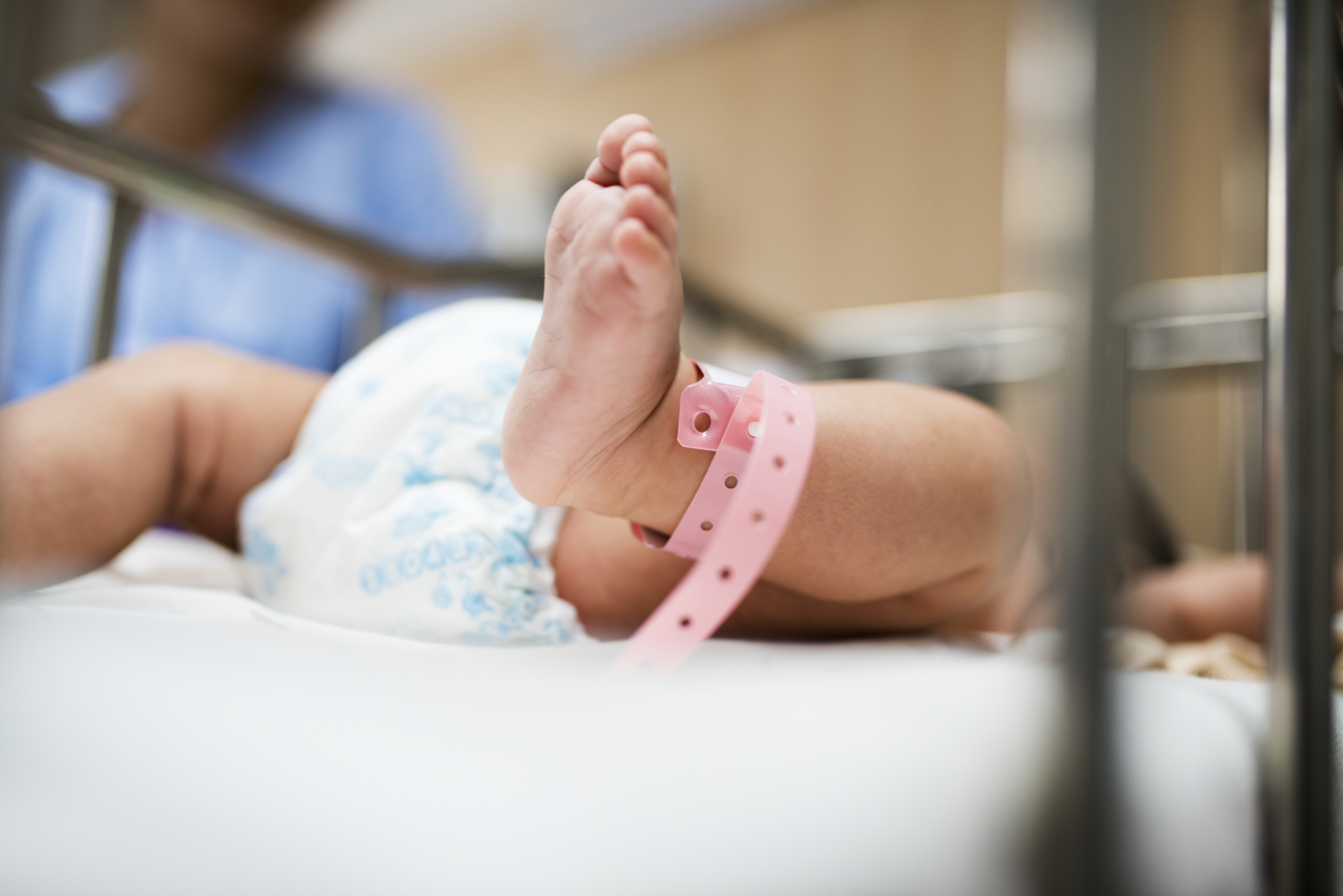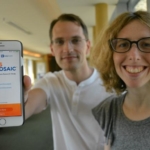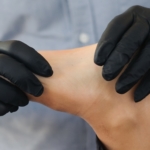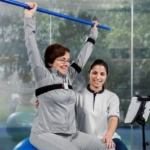Bedside prognostic tool identifies infants at risk for Cerebral palsy
This case-control study evaluates a cerebral palsy prognostic tool that can be applied to all term neonates to identify those at increased risk of developing cerebral palsy.

A newborn baby. Image by rawpixel.com on Freepik
by Jennifer Henderson, Enterprise & Investigative Writer, MedPage Today January 19, 2023
A new prognostic model for identification of term-born neonates at increased risk for cerebral palsy (CP) may have brought better outcomes through early intervention one step closer.
The model, based on 12 clinical variables, improved the prediction of CP in infants compared with clinical presentation of encephalopathy, Mary Dunbar, MD, of the University of Calgary in Alberta, and colleagues reported in JAMA Pediatrics.
Their model identified twice as many children with CP than would have been detected if only encephalopathy was considered. At the selected probability threshold of 0.3, the model detected 65.0% with CP (466 of 716 participants) when only 27.5% (197 of the participants) presented with encephalopathy (OR 13.8, 95% CI 8.87-22.65).
“Dramatic clinical presentations, such as neonatal encephalopathy, can be used to identify select populations of high-risk infants; however, in half of children with CP, there is no such history, and CP may not be recognized until the second year of life,” Dunbar and colleagues wrote. “Later recognition of CP delays therapies that may be more effective when performed earlier.”
The researchers noted that there are currently no methods to screen term-born neonates to identify those at risk of developing CP who would stand to benefit from early diagnosis and treatment.
“There is still a pervasive perception that cerebral palsy only occurs in children with a history of prematurity or difficult delivery,” Dunbar wrote in an email to MedPage Today. “By consolidating some common risk factors into one tool, we’re hoping to help make a broader understanding of CP risk factors more accessible.”
“Parents are really perceptive and often have concerns about their baby’s development before changes are obvious on physical exam, so in addition to being a screening tool for newborns, this tool could also help primary care providers decide about early referral to a pediatrician or other developmental specialist if there are parent developmental concerns in the first 6 months and a high CP prediction score,” Dunbar added.
In an accompanying editorial in JAMA Pediatrics, Iona Novak, PhD, of the University of Sydney, and colleagues wrote that the researchers’ prognostic tool “addresses a critical gap in screening for CP in term-born infants” and that “the tool appears to be cost-effective and feasible for use by busy primary care clinicians as it uses a risk profile built upon information collected during routine clinical care.”
Novak and colleagues added that “the question of ‘who’ to universally screen to identify the total population of CP early requires further refinement, due to the multiple causal pathways to CP.”
At the probability threshold of 0.3, the sensitivity of 65% (95% CI 61-68), which Dunbar’s group characterized as moderate, “supports that there are heterogenous etiologies underlying CP, and no single test will capture all patients,” according to the study authors.
Specificity was 71% (95% CI 69-73), positive predictive value was 47% (95% CI 44-50), and the negative predictive value was 83% (95% CI 81-85).
The final prognostic model developed consisted of seven binary variables (tobacco use, drug use, diabetes, preeclampsia, chorioamnionitis, prolonged rupture of membranes, and male sex) and five continuous variables (number of pregnancies, number of miscarriages, 5-minute Apgar score, weight, and gestational age in weeks).
The study used data on 1,265 children with CP and 1,985 controls born at 37 or more weeks’ gestation (median 39 weeks, 53.9% male) in the Canadian Cerebral Palsy Registry and the Alberta Pregnancy Outcomes and Nutrition study.
When the 28.3% of children with CP with a history of neonatal encephalopathy were excluded, the sensitivity of the model was 57% (95% CI 53-62), the specificity was 73% (95% CI 71-75), the positive predictive value was 38% (95% CI 35-42), the negative predictive value was 85% (95% CI 85-87), and the C statistic was 0.7 (95% CI 0.69-0.74), with 1,598 of 2,303 participants (69.4%) correctly classified.
Children with CP had significantly more modifiable risk factors versus the control group, Dunbar and colleagues noted.
Data on the five significant potentially modifiable binary risk factors (tobacco use, drug exposure, diabetes, preeclampsia and chorioamnionitis) were complete in 914 CP cases and 1,836 controls. At least one of those risk factors was present in 446 with CP (48.8%) and 209 controls (11.4%), and at least two of the risk factors were found in 101 with CP (11.1%) and 10 of the controls (0.5%).
“An important result of the prognostic tool is the confirmation that CP in term infants is related to risk factors beyond those associated with intrapartum asphyxia,” the researchers noted.
However, the fact that 30% of CP patients didn’t have pregnancy, delivery, or neonatal risk factors to aid in prediction means “this group requires further characterization, particularly with regard to genetic diagnoses,” they added.
Having multiple risk factors only further increased the probability of CP for children with Apgar scores of 3 or greater.
Limitations of the study included the ceiling effect on risk ratio at the highest probabilities due to the high proportion of participants with CP, such that relative risk had to be calculated by extrapolating to a hypothetical population, the researchers noted. Also, the control group was older, better educated, of higher socioeconomic status, and more likely to be white than the average Canadian population, the researchers added. Furthermore, recall bias was likely at play, with parents of children with adverse outcomes more likely to recall risk factors in the pregnancy.
Ultimately, the newly developed prognostic model “may be used at a population level for the early detection of CP,” Dunbar and colleagues concluded, and “may allow for infants with uneventful pregnancies or deliveries to be identified for early interventions.”
| Jennifer Henderson joined MedPage Today as an enterprise and investigative writer in Jan. 2021. She has covered the healthcare industry in NYC, life sciences and the business of law, among other areas. |
| Disclosures |
| The Canadian Cerebral Palsy Registry was supported by the NeuroDevNet, Kids Brain Health, Harvey Guyda Chair of McGill University, Montréal Children’s Hospital, and the Public Health Agency of Canada. |
| The researchers reported no conflicts of interest. Novak had no disclosures. A co-author of the editorial reported being a tutor for the General Movements Trust. |
Source MedPage Today
| References |
Development of a Bedside Tool to Predict the Diagnosis of Cerebral Palsy in Term-Born Neonates, Rouabhi A, Husein N, Dewey D, Letourneau N, Daboval T, Oskoui M, Kirton A, Shevell M, Dunbar MJ; Canadian Cerebral Palsy Registry. JAMA Pediatr. 2023 Feb 1;177(2):177-186. doi: 10.1001/jamapediatrics.2022.5177.
New Screening Tool for Term-Born Infants Enables Update to the Clinical Practice Guideline for Early Diagnosis of Cerebral Palsy, Toohey, Monica BAppSc, (Phty); Morgan, Catherine BAppSc, (Phty), PhD; Novak, Iona BAppSc, MSc(Hons), PhD. JAMA Pediatr. 2023 Feb 1;177(2):115-117. doi: 10.1001/jamapediatrics.2022.5189.
| Further reading |
Risk Factors for Term-Born Periventricular White Matter Injury in Children With Cerebral Palsy: A Case-Control Study, Marefi A, Husein N, Dunbar M, Dewey D, Letourneau N, Oskoui M, Kirton A, Shevell MI; Canadian Cerebral Palsy Registry (CCPR). Neurology. 2022 Nov 29;99(22):e2485-e2493. doi: 10.1212/WNL.0000000000201274. Epub 2022 Aug 30. Full text, PDF
Early Diagnosis and Treatment of Cerebral Palsy in Children with a History of Preterm Birth, Spittle AJ, Morgan C, Olsen JE, Novak I, Cheong JLY. Clin Perinatol. 2018 Sep;45(3):409-420. doi: 10.1016/j.clp.2018.05.011. Epub 2018 Jul 2. PDF
Early, Accurate Diagnosis and Early Intervention in Cerebral Palsy: Advances in Diagnosis and Treatment, Novak I, Morgan C, Adde L, Blackman J, Boyd RN, Brunstrom-Hernandez J, Cioni G, Damiano D, Darrah J, Eliasson AC, de Vries LS, Einspieler C, Fahey M, Fehlings D, Ferriero DM, Fetters L, Fiori S, Forssberg H, Gordon AM, Greaves S, Guzzetta A, Hadders-Algra M, Harbourne R, Kakooza-Mwesige A, Karlsson P, Krumlinde-Sundholm L, Latal B, Loughran-Fowlds A, Maitre N, McIntyre S, Noritz G, Pennington L, Romeo DM, Shepherd R, Spittle AJ, Thornton M, Valentine J, Walker K, White R, Badawi N. JAMA Pediatr. 2017 Sep 1;171(9):897-907. doi: 10.1001/jamapediatrics.2017.1689. Erratum in: Error in Table, JAMA Pediatr. 2017 Sep 1;171(9):919. doi: 10.1001/jamapediatrics.2017.3169. Full text, PDF






